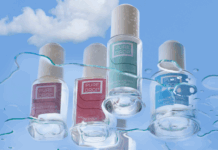At CES 2025, the L'Oréal group unveiled L'Oréal Cell BioPrint, a device that allows you to carry out a personalized analysis of your skin in just a few minutes, and deliver customized advice.
L'Oréal Cell BioPrint can calculate the skin's age and provide advice on how to slow the appearance of signs of aging. The device also analyzes each individual's reactivity to key ingredients such as retinol, and offers a proactive approach to skin care: will the skin be prone to pigmentation spots or dilated pores? L'Oréal Cell BioPrint can help anticipate potential cosmetic inconveniences before they become visible, enabling us to act proactively and thus preserve the beauty of our skin.
"At L'Oréal, we are resolutely focused on the future of beauty, combining our century-old leadership in skin science with our latest scientific discoveries. The skin is the largest organ of the human body, and one of the essential components of everyone's well-being. That's why we're delighted to unveil L'Oréal Cell BioPrint, a microfluidic 'lab-on-a-chip' innovation that gives everyone access to in-depth information about their skin, via the analysis of specific biomarkers. In this way, everyone can proactively take care of their beauty and the longevity of their skin", explains Barbara Lavernos, Executive Vice-President in charge of Research, Innovation and Technology at L'Oréal Groupe.
The exclusive microfluidic lab-on-a-chip technology developed by NanoEntek uses over 100 patents to measure in five minutes the presence of L'Oréal's innovative protein biomarkers, identified for the first time by L'Oréal's advanced research team. L'Oréal Cell BioPrint is based on L'Oréal's Longevity Integrative Science, a revolutionary approach that studies the correlating links between human body mechanisms and skin appearance.
L'Oréal Cell BioPrint works through a simple, non-invasive three-step process: applying an adhesive patch to the cheek, then placing it in a buffer solution; loading the solution into the L'Oréal Cell BioPrint cartridge and inserting it into the machine for analysis; while L'Oréal Cell BioPrint processes the sample, taking several images of the face through the Skin Connect device. A short questionnaire on skin concerns and signs of aging is completed during this final stage.
L'Oréal Cell BioPrint is due to be launched with a L'Oréal Groupe brand in Asia during 2025.
The quest for greater personalization in skincare
L'Oréal points out that growth in the global skincare market, which is expected to reach $125 billion in 20242is driven by consumers looking for information and increasingly effective, personalized products for their skin.
According to a recent US survey of 2,000 skincare users, nearly 80 % of them said they relied on the empirical method to determine what worked for them. Each person having tried an average of seven different cleansers before finding one that worked for them3.
2. BMS T2024l.
3. Produced by OnePoll in collaboration with CeraVe.
2 "Clinical vs. chronological skin age: exploring determinants and stratum corneum protein markers of differential skin aging in 351 healthy women."by A. Foucher, S. Nouveau, V. Piffaut, S. Marque, L. Aguilar & N. Cavusoglu, Nature, October 9, 2024.
Photo: © L'Oréal Groupe








